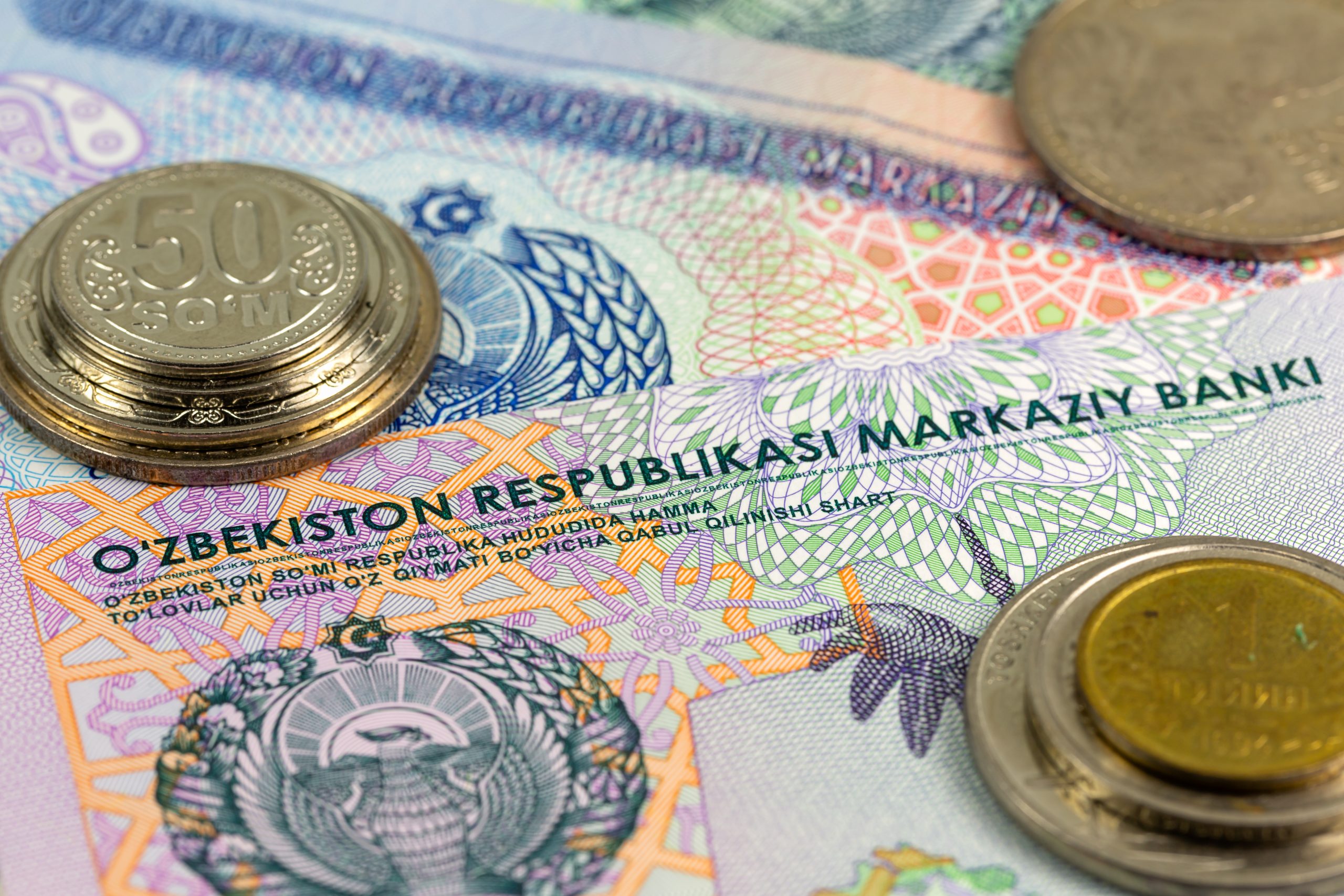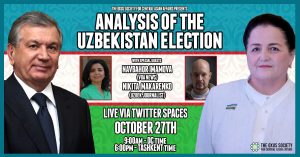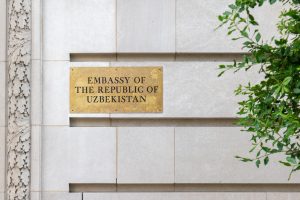Uzbekistan’s Reform Drive Reaches the Banking Sector
Uzbekistan’s adoption of a new Banking System Reform Strategy in December 2020 signals a turning point for the country’s credit sector. The decree charts the course for the industry’s proposed makeover in the next five years and should go a long way toward liberalizing Uzbek banking, introducing greater discipline and transparency, modernizing consumer and corporate lending, and potentially empowering a new class of private investors.
The overhaul of the banking sector has been ongoing since 2017, when the government removed currency controls, allowing the national currency to float freely. Lawmakers amended the 1996 Law “On Banks and Banking Activities” at the end of 2019, redefining and updating the powers of the Central Bank with an emphasis on price stability and oversight, and allowing foreign investors to own up to 5 percent of domestic banks with a mere notification to the regulator. This replaced the previous rule that capped foreign ownership to 1 percent and subjected it to regulatory approval. Rules on anti-money laundering, currency transactions, settlements, and to improve the availability of banking services were also adopted in the past few years.
Uzbekistan’s banking sector is highly concentrated, with 13 of 31 banks currently in government hands. They represent over 87 percent of equity and hold 85 percent of all assets. The top three banks – National Bank of Uzbekistan, Asaka Bank and Industrial and Construction Bank—hold 27 percent, 14 percent and 13 percent of the market respectively.
The latest blueprint outlines wide ranging privatization plans, aiming to bring the share of fully private banks from the current 15 percent to 60 percent of the market, in part by attracting at least three strategic foreign investors to at least three state-owned banks. In turn, it aims to increase the share of the private sector in total liabilities from the current 28 percent to 70 percent. Ipoteka Bank, Uzsanoatqurilishbank, Asaka, Aloqabank, Qishloq Qurilish Bank and Turonbank, which collectively control about 44 percent of banking assets, are each slated for privatization.
While private banks are in their infancy, the market is rewarding consumer-focused players. With more than 10,000 customers per ATM in most regions, the low presence of banks outside major cities offers opportunities for new entities and foreign investors alike, given the government’s wish to see a fivefold increase in branches. As a society where informality and cash transactions prevail, Uzbekistan offers much room for growth. The Central Bank is nudging households to the banking system, and the state has shifted to direct deposits for pension payments to accelerate the transition.
Sectoral reforms, which include a mortgage development facility supported by a $200 million loan from the Asian Development Bank, have boosted lending by 26 percent in 2019, allowing Uzbekistan’s banking industry to achieve the highest growth in the region. Assets reached 52 percent of GDP, surpassing Kazakhstan’s 41 percent ratio. Households represent the fastest growing segment, with a 63.5 percent increase year-over-year, followed by consumer lending with 63.7 percent and corporate loans with 20 percent. Net profits grew 1.5 times in 2019, driven by a 76 percent increase in net interest income: nearly 3/5 of the overall financial result.
The sector’s modernization includes the expansion of mobile and e-banking, as seen with the rollout of three new electronic platforms in the past two years. They are OCTO for online sales, Anor for round-the-clock business transactions, and OSON, the country’s first electronic money system.
The number of banks raising capital on international capital markets is growing. After Hamkorbank, the National Bank for Foreign Economic Affairs has issued $300 million worth of Eurobonds on the London Stock Exchange. In November 2020, Ipoteka Bank became the third SOB to issue a $300 million tranche of Eurobonds with a 5-year maturity. JP Morgan acted as sole global coordinator, and MUFG, Raiffeisen Bank International and Société Générale as joint bookrunners. Xalq Bank obtained a $150mn loan from Deutsche Bank AG (Germany), tantamount to 32.5 percent of its assets.
Taking note of the changing environment, international players have begun to join the fray. Halyk Bank (Kazakhstan) established a subsidiary in 2019 named Tenge Bank, which is now looking to expand beyond the Tashkent area. TBC Bank (Georgia) entered in April 2020 and wants to become the country’s leading digital bank, thanks to the acquisition of Payme. Gazprombank (Russia) and KfW Development Bank (Germany) were both approved to set up local offices, while Commerzbank and Deutsche Bank (Germany) already have representative offices.
These newcomers join the longstanding presence of Korean and Turkish investors. Ziraat Bank entered in 1993 through a joint venture with Agrobank named Uzbek-Turkish Bank, which it recently bought out and turned into a subsidiary. Korean Development Bank has owned a local subsidiary since 2006, when it purchased UzDaewoo Bank, created in 1997.
Private equity firms are similarly setting their sights on the country. Asia Frontier Capital, based in Hong Kong, launched an Uzbekistan Fund in March 2019 to seize the opportunities in the country’s liberalizing economy. Triodos Investment Management A.G. and DEG, the German Investment Corporation, acquired equal minority stakes in Ipak Yuli Bank through the issuance of new shares for $25 million. Switzerland’s ResponsAbility Investments holds a 7.7 percent stake in Hamkorbank, while Sawada Group (Japan) is eyeing the privatization of Asia Alliance Bank.
Risks Remain
But investing in Uzbekistan remains a risky business. On the downside, stress tests have revealed potential hazards in the quality of loans despite better showings than other countries in the region. By 2019, the number of non-performing loans had doubled since the beginning of 2018, albeit the growth in the number of new credits kept their ratio diluted to a mere 1.5 percent of gross total lending. Yet, there’s little doubt the government would intervene in the event of a crisis. A legacy of co-dependence between state and banks means that the government still plays a central role, both directing and backstopping the industry. The value of credit lines issued with state backing stood close to $600 million for the past two years, bringing the total debt owed to the government to $5.7 billion.
Moreover, a number of deep-seated issues may affect the pace of reforms. For one, nationwide 4G coverage will not be available before 2023, leaving most of the country running on outdated 3G networks. This will slow down the diffusion of mobile banking. Stakeholders also highlight issues with the quality of governance and transparency in the sector, while nepotism, a corrupt and inefficient judiciary, and continued political interference in the industry pose additional risks.
Outlook
The reforms enjoy strong backing provided by a trio consisting of Mamarizo Nurmuratov, chairman of the Central Bank of Uzbekistan, Timur Ishmetov, Minister of Finance, and Jamshid Kuchkarov, freshly minted as Minister of Economy and Poverty Reduction. As they gain momentum, the reforms are expected to strengthen the system’s competitiveness and profitability, although margins will eventually shrink. Nonetheless, the outlook is positive as the expanding size of the economy can sustain higher levels of credit, while the ongoing liberalizations and privatizations across different sectors will sustain the demand for loans and other financial services.
The bank privatization agenda trails on earlier plans to sell off more than 1,000 state-owned enterprises. Over time, cooperation with international financial institutions should also help ease some of the governance problems. These, however, will not disappear as they are rooted in historical custom and in informal power structures that tend to resurface even when the names at the top are replaced. At the same time, government reform efforts are empowering a new breed of economic and political oligarchs, a group that former President Islam Karimov suspected and worked hard to restrain.
Nicola Contessi is an Associate of the York Centre for Asian Research and has previously held positions at Nazarbayev University, Columbia University, McGill University and the United Nations. His research focuses on the international relations of Central Asia.




